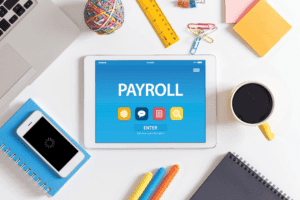
Besides cost, secure business establishes entities as trustworthy, resulting in repeat sales and long-term relationships. Electronic fund transfers facilitate the quick and safe movement of money electronically. Be vigilant when conducting an electronic financial transaction. Protect your PIN and only use apps you trust to send and receive money.
How to dispute an EFT transaction
Unlike debit and credit card EFT transactions that happen in real time, ACH payments are processed in batches each day and can take one to four days to complete. Larger banks can often process ACH payments faster than smaller banks. Every transaction begins with one person handing over money to another. Digital payment acceptance has accelerated since the COVID-19 outbreak. It has become the most common approach virtual accountant to transacting today and will continue to be so in the future.
- With EFT payments, the funds from one bank are transferred to another electronically.
- In addition, you can use EFTs to pay bills, such as for phones or utilities, and transfer a credit card balance to a new credit card account.
- Direct deposit is how approximately 95% of employees are paid by their employers.
- A risk of mailing checks involves potential mail loss, or even interception of checks.
- Even as technology advances, the acceptance and the usage of EFT are expected to grow, revolutionizing the way traditional banking systems work.
- Because ACH payments are one of the fastest ways to get paid, BILL offers quick and easy electronic payments processing for ACH payments.
What Is An EFT Payment?
However, with its board’s agreement, banks may set amount limitations based on their risk judgment. The process of sending fixed assets funds to any part of the country has gotten much easier now that most banks are EFT-enabled. If services are interrupted, the RBI notifies banks and customers.
Benefits of EFT payments

EFTs use digital networks to transfer your financial information. Most of these are constantly updating their security protocols, but there is the chance, however slight, of losing money to hackers or fraudsters. Although the EFTA provides your transactions with a level of protection, you might become a victim electronic funds transfer of a scam or have your banking information fall into the wrong hands. Once the transaction is initiated, the funds are typically transferred within minutes.

How do EFT payments work?

Similarly, the recipients can also be anyone, including employees, product suppliers, retailers, and businesses such as utility companies. In conclusion, EFT has revolutionised the way we think about money transfers, making them quicker and more efficient. As technology continues to advance, EFT systems are set to become even more streamlined and user-friendly. This comprehensive guide to understanding EFT will provide an overview of how this type of payment works, the steps involved, and its key benefits and risks. ✝ To check the rates and terms you may qualify for, SoFi conducts a soft credit pull that will not affect your credit score.
Universal accessibility

The CFPB is responsible for enforcing the EFTA and investigating complaints about electronic fund transfers. Overall, using EFT payments can offer many advantages for businesses and individuals. However, when choosing a payment method, you should consider the specific needs of your organisation or personal finances to decide whether EFT is the right option.
- There’s a risk of human error in counting, fraudulent bills, and extra expense and effort for an employee to manage the money from transaction to filling the safe to in-person deposit at the bank.
- ACH payments are typically used for direct payments like payroll direct deposits and recurring payments you make each month to companies for your utilities and rent.
- Every transaction begins with one person handing over money to another.
- If you have a “Payments and receivables” section on your bank’s website or app, you may be able to track an EFT there.
- These fees may be more likely if you don’t have an account with the ATM owner or your transactions occur at remote locations.
- The way the average person banks has changed a lot over the years.
You can use them for withdrawing cash, making deposits, or transferring funds between accounts. The process generally involves inserting an ATM card and entering your security PIN. The process allows the person sending money to initiate a transfer from an originating account. In most cases, the Automated Clearing House channels the transaction through the Federal Reserve system before the money up in the receiver’s account. Another benefit is that they’re usually very affordable; most P2P payment apps don’t charge fees for individual transactions (though there may be some limit on how much you can send per day or week). And finally, P2P payments are usually very fast; once you’ve initiated a transaction, the funds will typically be available in the recipient’s account within minutes (or even seconds).